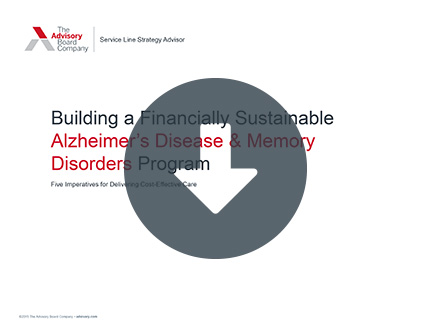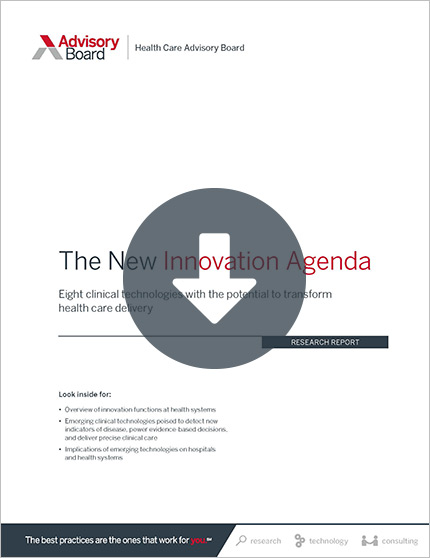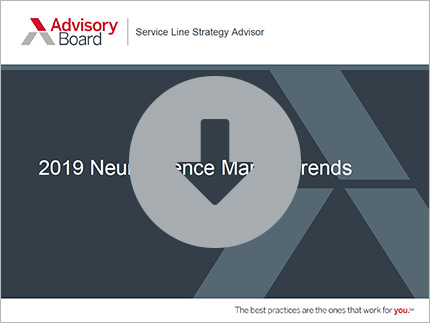Auto logout in seconds.
Continue LogoutZapping adults' brains with electrical current for 25 minutes reversed their age-related decline in working memory, allowing some people to experience "the superior function [they] had when [they] were much younger," according to a study published Monday in Nature Neuroscience.
Get ready-to-present slides on the latest neurosciences market trends
Research into the approach is still in the early stages, and researchers monitored its effects for only 50 minutes. Even so, experts say the results shine unprecedented light onto why older adults have trouble following a conversation or remembering an address they just read.
Short-term brain stimulation improves working memory
Working memory, explained Robert Reinhart, a lead author of the study, "is a fundamental building block of human cognition… [that] allows us to hold information in our minds over a period of seconds." He added, "It's where we think, where we problem-solve, where we reason, plan, perform mathematical calculations, and make decisions."
It's long been known that working memory declines as we age, and researchers have long hypothesized that the decrease is due to a lack of synchronization between important brain circuits. The new study sought to put that theory to the test.
Reinhart and John Nguyen, both neuroscientists at Boston University, invited two groups of adults to perform a series of working memory-related tasks: a group of 42 younger adults, ages 20 to 29, and a group of 42 older adults, ages 60 to 76. During the memory tasks, the researchers monitored participants' brainwaves using EEGs.
Without brain stimulation, the researchers found the younger adults correctly completed the memory task 90% of the time, while older adults answered correctly about 80% of the time.
But after undergoing 25 minutes of gentle transcranial alternating current stimulation (taCS), which is designed to connect and synchronize key regions of the brain that are responsible for memory, older adults scores quickly improved. They correctly completing the memory tasks 90% of the time, matching the younger participants' scores—and those benefits last more than 50 minutes, at which time researchers stopped monitoring brain activity.
What's more, EEGs suggested a reason for the improvement: After the electric stimulation, synchronization of brainwaves improved between the participants' temporal and prefrontal cortexes.
A 'game-changer' for memory loss treatment?
The findings support theories of cognitive aging that suggest "working-memory decline in people in their 60s and 70s is due to brain circuits becoming uncoupled, or disconnected," according to Reinhart.
But Reinhart adds that the findings show that these "negative, age-related changes in working memory are not unchangeable." In fact, non-invasive procedures such as brain stimulation might be able to "bring back the superior function you had when you were much younger," he said.
Michael Nitsche, a neurophysiologist at Germany's University of Göttingen, who reviewed the paper for the journal, said, "This is a well-designed, rigorous study." He added, "It adds important information about the causal relevance of alterations of [brainwaves] for age-dependent cognitive decline, and it shows that these alterations are reversible."
Michael Kahana, a brain scientist at the University of Pennsylvania who was not involved in the study, said the results "could be a game changer for the treatment of age-related memory decline and possibly even dementia."
But 'do not try this at home,' experts warn
Reinhart said he hoped that the results of the study could "lay the basic science groundwork" for non-invasive treatment options for people who are suffering from brain disorders that are caused by working memory deficits, such as autism, Alzheimer's disease, and schizophrenia.
But experts warned that more research is needed before such a solution could be considered mainstream and safe. As Bradley Voytek, a neuroscientist at the University of California, San Diego, said "Do not try this at home! This is a promising start, not a panacea for memory problems" (Carey, New York Times, 4/8; George, MedPage Today, 4/8; Begley, STAT News, 4/8; Reinhart/Nguyen, Nature Neuroscience, 4/8).
Get ready-to-present slides on the latest neurosciences market trends
Download the slides to learn everything you'll need to know about the neuroscience market in 2019, from growth outlook and financial considerations to new care management priorities and technology innovations.
Don't miss out on the latest Advisory Board insights
Create your free account to access 1 resource, including the latest research and webinars.
Want access without creating an account?
You have 1 free members-only resource remaining this month.
1 free members-only resources remaining
1 free members-only resources remaining
You've reached your limit of free insights
Become a member to access all of Advisory Board's resources, events, and experts
Never miss out on the latest innovative health care content tailored to you.
Benefits include:
You've reached your limit of free insights
Become a member to access all of Advisory Board's resources, events, and experts
Never miss out on the latest innovative health care content tailored to you.
Benefits include:
This content is available through your Curated Research partnership with Advisory Board. Click on ‘view this resource’ to read the full piece
Email ask@advisory.com to learn more
Click on ‘Become a Member’ to learn about the benefits of a Full-Access partnership with Advisory Board
Never miss out on the latest innovative health care content tailored to you.
Benefits Include:
This is for members only. Learn more.
Click on ‘Become a Member’ to learn about the benefits of a Full-Access partnership with Advisory Board
Never miss out on the latest innovative health care content tailored to you.



